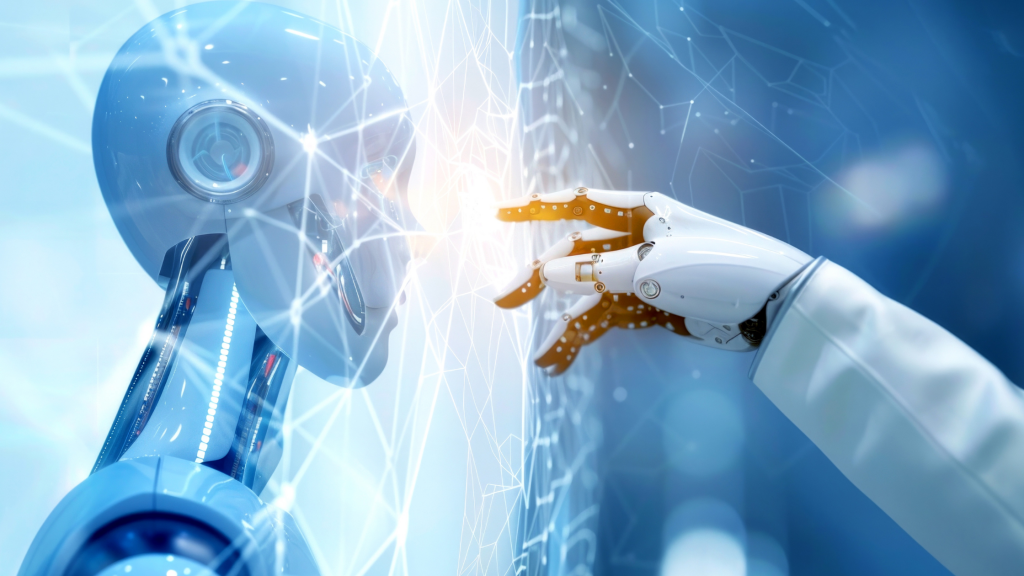The evolution of artificial intelligence has entered a transformative phase. What began as task-specific assistants—chatbots that could answer questions or AI tools that offered predictive analytics—has matured into something far more powerful: autonomous agents. These next-generation tools are no longer just supporting users; they are actively operating systems, making decisions, and executing complex workflows with minimal or no human intervention.
In industries driven by speed, innovation, and automation—especially software development—these AI agents are reshaping how teams work, scale, and deliver.
What Are Autonomous AI Agents?
Autonomous agents are AI systems designed to analyze a goal, break it down into smaller tasks, and execute those tasks independently. Unlike traditional AI assistants, which are reactive and follow direct human instructions (e.g., “summarize this text” or “schedule a meeting”), autonomous agents proactively create and follow action plans, making decisions along the way to accomplish broader objectives.
This shift from assistants to operators is driven by multi-modal capabilities, long-term memory integration, and the use of large language models (LLMs) in looped task chains.
Traditional Assistants vs. Autonomous Agents
The distinction between traditional AI assistants and autonomous agents lies in how much initiative and complexity each can handle. Traditional assistants are reactive by design. They perform well-defined tasks based on direct, moment-to-moment instructions—generate a response, schedule a meeting, summarize a document. Their utility is bounded by their need for continuous human guidance and limited contextual memory.
Autonomous agents, on the other hand, operate with a fundamentally different architecture. Once given a high-level objective, they can initiate, manage, and complete a sequence of interdependent tasks. They reference persistent memory, adapt their actions based on outcomes, and make context-aware decisions. The level of human input required is dramatically reduced—often limited to a single prompt or approval checkpoint.
In essence, the evolution from assistant to agent is the evolution from tool to teammate:
- Assistants respond to commands; agents pursue outcomes.
- Assistants require supervision; agents require alignment.
- Assistants handle one task at a time; agents handle the workflow.
This shift isn’t just about convenience—it’s about enabling scalable, autonomous execution across complex domains like software development, infrastructure management, and product operations.
Key Use Cases for Software Development Teams
For software engineering teams, the applications of autonomous AI agents are both practical and disruptive. These tools offer end-to-end support across the development lifecycle, optimizing resources and accelerating delivery.
1. Automated Coding & Feature Building
AI agents for software teams can build components based on feature requests written in natural language. By leveraging context and repository access, agents can create clean, modular code aligned with existing architecture.
2. Testing & QA Automation
Autonomous agents like AutoGPT can run test cases, interpret failures, and update code to resolve issues. They don’t just identify bugs—they propose or implement fixes, enabling continuous improvement.
3. CI/CD Pipeline Management
Agents can oversee continuous integration and deployment pipelines, ensuring timely releases and rolling back faulty deployments without human oversight. This level of workflow autonomy can dramatically reduce downtime and deployment delays.
4. DevOps & Infrastructure Operations
From provisioning environments to scaling server loads, AI agents are being used to handle infrastructure tasks dynamically. They evaluate system health and act before a human even notices a problem.
Examples of Autonomous Agent Tools in Action
AutoGPT
AutoGPT is one of the most recognized examples of an autonomous agent. Built on OpenAI’s GPT models, it allows users to define a goal (e.g., “Research and summarize the top 5 CRM tools for startups”) and executes that task using a chain of reasoning, planning, execution, and refinement steps. It can even launch browser sessions, access APIs, or generate documents—without user intervention after the initial prompt.
BabyAGI
Inspired by the goal of creating general-purpose agents, BabyAGI combines task management and memory handling with LLMs to create an ongoing task loop. It’s especially useful in environments where the system must adapt and reprioritize goals dynamically—such as evolving product requirements in a software sprint.
These are just the start. Platforms like LangChain, CrewAI, SuperAGI, and others are building agent-based ecosystems that integrate with tools like GitHub, Jira, and Slack—tailored for enterprise needs.
The Benefits of Workflow Autonomy
Why are businesses so interested in autonomous AI agents? Because they streamline operations, reduce costs, and increase productivity.
- Speed: Tasks that used to take hours or days are now handled in minutes.
- Consistency: Agents eliminate human error in repetitive processes.
- Scalability: One agent can perform the job of multiple team members, especially for support functions.
- Focus: Human engineers can prioritize creative problem-solving while agents manage the mechanical or redundant tasks.
By integrating AI decision-making tools, organizations can reduce bottlenecks, accelerate time-to-market, and operate with higher precision across teams.
Limitations and Risks
Despite their promise, autonomous agents are not without challenges.
- Context Awareness: While LLMs are powerful, they often lack real-world context or nuanced judgment—making oversight critical.
- Ethical Concerns: Decisions made by AI without human review can raise compliance, fairness, and privacy issues.
- Error Propagation: A faulty instruction at the start of an agent’s task loop can result in cascading failures if there’s no checkpoint.
- Security Risks: Agents with system-level access require strict safeguards to prevent misuse or unintended outcomes.
Therefore, most teams today deploy agents with defined scopes and fail-safes, balancing autonomy with accountability.
Looking Ahead: The Future of AI Operators
Autonomous agents represent a seismic shift in how software is designed, deployed, and managed. In the near future, we can expect:
- Agent-based teams working alongside human engineers in agile sprints
- Multi-agent collaboration where AI tools delegate tasks to one another based on skill or function
- Integration with enterprise systems, enabling AI to directly influence sales ops, HR, customer support, and more
As these AI tools evolve, companies that understand their capabilities—and their limitations—will be best positioned to capitalize on this shift.
Final Thoughts
The rise of autonomous agents signals a new era in AI adoption. Moving from passive assistance to proactive operation, these tools offer immense value—particularly for software teams seeking speed, scale, and flexibility. But success depends on thoughtful implementation, ethical design, and an ongoing commitment to human oversight.
As we stand on the edge of agent-driven automation, one thing is clear: AI agents for software teams aren’t just tools—they’re teammates in the making.











